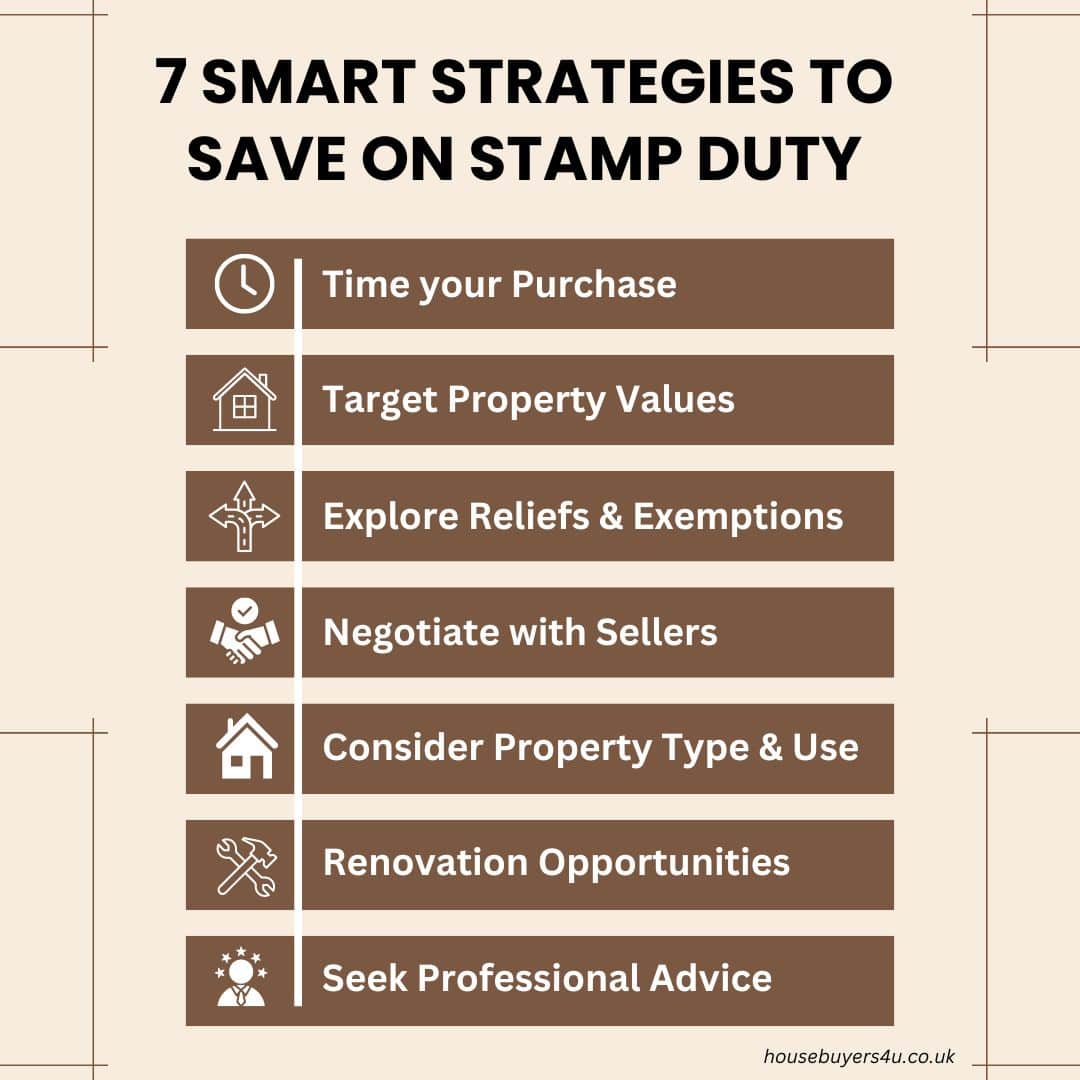What is Stamp Duty? UK Property Tax Explained Simply (2025)

Stamp duty is a tax paid by property buyers in the UK, sometimes adding thousands to your total cost. The amount depends on where you’re buying, your buyer status, and the price of the property.
-
The latest stamp duty rates and how they impact your budget.
-
Expert tips on how to save money with exemptions and reliefs.
-
Strategies to time your purchase and reduce your overall tax bill.
What is Stamp Duty in the UK?
Stamp duty is a property tax that buyers must pay when purchasing homes or land at a price above a set threshold in the UK. It’s known as Stamp Duty Land Tax (SDLT) in England and Northern Ireland, Land and Buildings Transaction Tax (LBTT) in Scotland, and Land Transaction Tax (LTT) in Wales. This tax can add thousands to your overall costs, so it’s essential for buyers to factor it into their budget early, especially as rates, thresholds, and reliefs vary by region and buyer type.
How to Calculate Stamp Duty
Calculating stamp duty can seem tricky at first, but it’s straightforward once you break it down. The tax is applied in bands, meaning different portions of the property price are taxed at different rates.
For example, if your property’s value falls into two or more bands, you'll pay a certain percentage on each portion of the price that falls within a specific band.
A stamp duty calculator can help you identify how much stamp duty you need to pay. It is simple to use just enter the property price, and the calculator will do the rest. Here's a list of some of the official online calculators:
-
England & Ireland
-
Scotland
-
Wales
Stamp Duty for Different Buyer Types
Stamp duty varies for different types of buyers. It is necessary to understand these types so you can plan your property purchase and budget effectively.
Single Property Stamp Duty in England & Northern Ireland
| Property Value | Stamp Duty Rate |
|---|---|
| Up to £250,000 | 0% |
| £250,001 to £925,000 | 5% |
| £925,001 to £1.5 million | 10% |
| Over £1.5 million | 12% |
Note: These rates apply to single residential property purchases in England and Northern Ireland for 2024.
Example of how Stamp Duty works:
Let’s say you’re buying a single residential property worth £800,000.
-
The first £250,000 is taxed at 0%, so no stamp duty is owed on this portion.
-
The next £550,000 (from £250,001 to £800,000) is taxed at 5%.
-
£550,000 x 5% = £27,500
-
Stamp Duty on Second Homes
If you’re buying a second home or an additional property, you’ll need to pay a higher stamp duty rate. An additional 3% is added to the standard rates for each band.
-
Up to £250,000 - 3%
-
Next £675,000 (the portion from £250,001 to £925,000) - 8%
-
Next £575,000 (the portion from £925,001 to £1.5 million) - 13%
-
The remaining amount (the portion above £1.5 million) - 15%
Example:
Let’s say you’re buying a second home worth £800,000.
-
The first £250,000 is taxed at 3%, so:
-
£250,000 x 3% = £7,500
-
-
The next £550,000 (from £250,001 to £800,000) is taxed at 8%, so:
-
£550,000 x 8% = £44,000
-
So, the total stamp duty payable on a second home worth £800,000 would be £7,500 + £44,000 = £51,500.
Related Read: Conveyancing fees explained
Stamp Duty and Regional Variations
Stamp duty isn't the same across the UK, and understanding the differences in each region can help you better plan your property purchase.
Stamp Duty Scotland: Land and Buildings Transaction Tax (LBTT)
In Scotland, stamp duty is replaced by the Land and Buildings Transaction Tax (LBTT). The structure is similar to stamp duty but with different thresholds and rates.
-
Up to £145,000 - 0%
-
£145,001 to £250,000 - 2%
-
£250,001 to £325,000 - 5%
-
£325,001 to £750,000 - 10%
-
above £750,000 - 12%
Learn more here: https://revenue.scot/taxes/land-buildings-transaction-tax
Land Transaction Tax (LTT) in Wales
Wales has its own version of stamp duty known as the Land Transaction Tax (LTT). LTT rates and bands are distinct from those in other parts of the UK.
-
Up to £180,000 - 0%
-
£180,001 up to £250,000 - 3.5%
-
£250,001 to £400,000 - 5%
-
£400,001 to £750,000 - 7.5%
-
£750,001 to £1.5m - 10%
-
Over £1.5m - 12%
Unlike other regions, there are no specific exemptions for first-time buyers in Wales.
Learn more here: https://www.gov.wales/land-transaction-tax-guide
How and When to Pay Stamp Duty
Your conveyancer or solicitor will usually handle the stamp duty process for you, calculating what’s owed, completing the required forms, and submitting payment to HMRC (or the relevant authority in Scotland or Wales).
Payment must be made within 14 days of completing your property purchase. If you miss this deadline, HMRC will charge late payment penalties and daily interest until the tax is settled so it’s crucial not to delay.
To verify that your stamp duty has been paid, ask your conveyancer for the UTRN (Unique Transaction Reference Number), an 11-digit code that confirms your payment has been received and processed. Always keep this for your records.
Related: How to choose a good conveyancer
Advice from our Property Expert Paul:
“Stamp duty calculations often trip up buyers, especially with tiered rates and exemptions. I always tell clients to double-check the bands for each region and use an official calculator before making any offers. Getting this right up front prevents unexpected bills, and it’s one of the most overlooked details that can throw off your moving budget.”
Exemptions & Reliefs
| Exemption/Relief | Who Qualifies | How It Works |
|---|---|---|
| First-Time Buyer Relief | First-time buyers (England & NI) | No stamp duty on first £425,000 (up to £625,000 property value) |
| Inherited Property | Anyone inheriting property | No stamp duty due (if no money changes hands) |
| Transfers After Divorce or Civil Partnership | Divorcing/separating couples | No stamp duty if the transfer part of a legal settlement |
| Low-Value Properties | Anyone buying property under £40,000 | No stamp duty applies |
| Certain Lease Transactions | Leaseholders with low-value leases | No stamp duty if lease premium under £40,000 and rent below £1,000 |
| Transfers by Will or Gift | Beneficiaries of wills or some gifts | Exempt in specific situations check latest rules |
7 Stamp Duty Strategies for Buyers
- Time your purchase strategically
- Monitor announced rate changes or government incentives.
- Consider waiting if a stamp duty holiday or rate cut is anticipated.
- Be aware of upcoming elections or budget announcements that might affect rates.
- Target property values just under thresholds
- Aim for properties priced just below stamp duty thresholds to minimise tax.
- For example, a £250,000 property incurs no stamp duty, while a £250,001 property would be taxed on the portion above £250,000.
- Explore available reliefs and exemptions
- First-time buyer relief: Offers reduced rates for properties up to £625,000.
- Multiple dwellings relief: Can reduce stamp duty when buying multiple properties in a single transaction.
- Check if you qualify for any specific exemptions based on your circumstances.
- Negotiate with sellers
- Try to negotiate with sellers to cover part or all of the stamp duty cost.
- Consider requesting a price reduction equivalent to the stamp duty amount.
- In a buyer's market, sellers may be more willing to contribute to these costs.
- Consider property type and use
- Mixed-use properties (e.g., a shop with a flat above) may qualify for lower non-residential stamp duty rates.
- Certain types of property, like houseboats or mobile homes, may not be subject to stamp duty.
- Renovation opportunities
- Consider purchasing a lower-value property that needs renovation.
- This approach can potentially reduce stamp duty while allowing you to increase property value through improvements.
- Seek professional advice
- Consult with a tax advisor or solicitor specialising in property transactions.
- They can help explore all available options and ensure compliance with current regulations.
- Professional advice is crucial for complex situations or high-value purchases.
While these strategies can be helpful, always consider your overall financial situation and long-term goals when making property decisions.
Need a Simpler Sale?
Stamp duty and legal costs can make the process of moving stressful and unpredictable. If you’re looking for a quicker, no-hassle sale or want some honest advice about your options, our team at Housebuyers4u is here to help.
Get in touch for a no-obligation offer or just a chat about what’s possible. No pressure, no hidden fees, just straightforward support from people who understand the property market.


